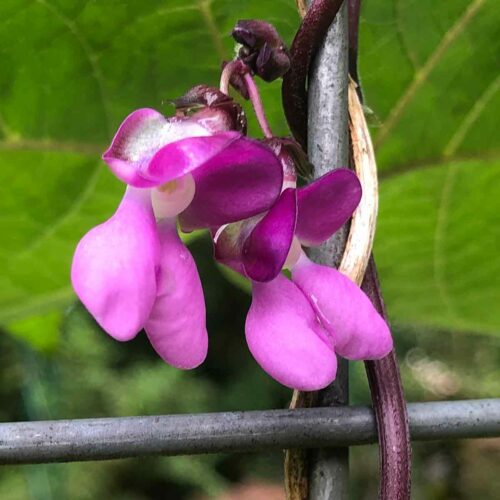Not your normal bean, Purple King Beans live up to the name, a deep velvety purple colour, beautiful looking on the vine.

They are a medium to large sized flat bean, straight pods with that amazing purple colour, however they will actually turn green when cooked.
A climbing bean, Purple King beans will need a trellis or other support.
When to Plant Purple King Climbing Beans
Planting time is determined by soil temperature, you are looking for soil temperatures above 20C for good growth.
So in cooler zones start them earlier in pots.
- In cool climate zones plant from mid spring to summer.
- In temperate zones plant from spring through to mid summer
- In tropical and sub tropical zones you can plant them year round.
How to grow Purple King Beans

These purple beans are grown the same way as other climbing beans, full sun and a humus rich soil.
You will need a trellis or other support which will allow the beans to climb to around 2m (6ft)
Prepare the soil by digging in compost and aged cow manure.
How to Plant Purple King Bean seeds
- Plant the seeds directly or start them off in tall pots.
- The seeds should be planted at around 2cm deep and 15cm apart.
- Water in well with a liquid seaweed fertiliser.
- Germination is usually in around 7 days.
- Keep the soil moist but not wet and soggy.
- Protect from slugs and snails.
- If started in pots plant the seedings out when they reach around 20 cm in height.
- Mulch around the plants to maintain a cool moist root run.
- From planting seeds to harvest will take around 60 days depending on conditions.
Harvesting
Purple King are a heavy cropping bean and are best harvested when the beans are mid sized (around d 20cm long). Older beans can be tough and have larger seeds developing. But do not let the seeds in the pod begin to bulge for the best tasting tender beans.
Pick smaller beans to use raw in salads, they add great colour.
You can leave a few beans on the plant to let seeds fully develop for next planting season. Do this late in the season as seed production sends a signal to the plant that it has done its job.
Did you know
The purple colour is caused by pigments anthocyanins and colour will vary according to the acidity (pH) of the soil.
